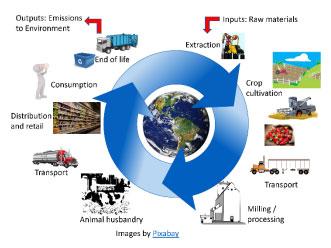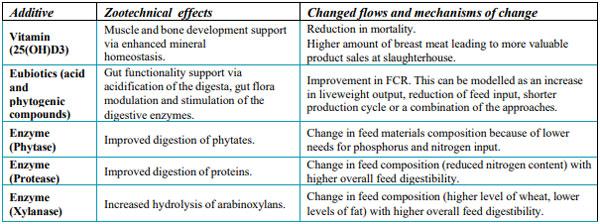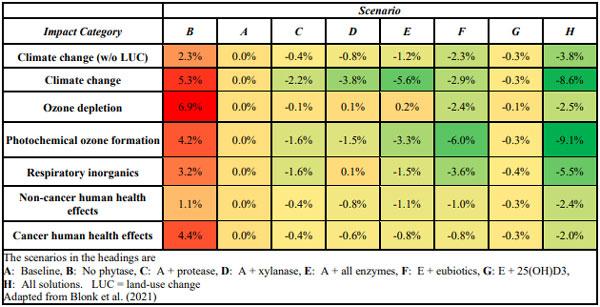Introduction
The global population is anticipated to reach around 10 billion people by 2050. At the same time the global middle-class is growing significantly particularly in high populous countries such as China and India. The combination of these two factors places significant pressure on global food systems which must be capable of providing food and nutrition security in 2050. The next 30 years are arguably one of the most critical transitions in human history as we approach a plateau to global population while recognizing that agriculture, and thus the food system, are significant factors in the overall environmental pressures affecting geopolitical stability. The burgeoning middle class is expecting to have high quality animal sourced food readily available, thus there are exacerbated pressures on the global livestock sector to increase resource use efficiency and produce more high-quality foods using a smaller resource base. It is in this context that we recognize the key role of animal feed in the global context of food and nutrition security for humanity. Thus, a suite of management techniques focused on improving the capacity of the livestock sector increased production and reduce environmental impact simultaneously are critical for our future success in meeting the food and nutrition requirements of humanity.
Lifecycle Assessment
Life cycle assessment (LCA) is a systems framework for evaluating environmental sustainability metrics for goods and services (ISO 2006). It consists of four main stages: 1) goal and scope definition; 2) lifecycle inventory; 3) lifecycle impact assessment; 4) interpretation. The process of performing an LCA is generally iterative in nature and is useful for identifying “hotspots” in supply chains which are activities that offer significant leverage for improvement because of relatively large contribution to environmental impacts (Figure 1). Past work (Figure 2) as shown that feed is an important consideration in sustainability assessment of livestock systems (Thoma et al. 2013; Putman et al. 2017, 2019). It follows that approaches focused on improving feed utilization and livestock systems should have beneficial outcomes improving environmental sustainability of the systems. Thus, in broad terms efforts to improve feed conversion ratios in livestock via improved animal genetics as well as utilizing feed formulation and additives have high potential for beneficial effects.
Feed Formulation for Sustainability
The formulation of rations for livestock is a highly constrained activity where the nutritional requirements of the animal are paramount and in general a least cost formulation is desired in support of economic sustainability. Thus, any modifications of feed ration composition with additional targets of environmental improvement may lead to trade-offs with the least cost formulation since the nutritional requirements are not subject to modification. An early example of the investigation into feed formulation effects is reported by Mosnier et al. (2011) who identify substitution of soybean meal in swine and poultry rations with synthetic amino acids as an approach to reduce climate change impacts. They report that, depending upon the source of soy meal different benefits and costs can result. For soybean meal sourced from Brazil in a region where deforestation is occurring a 2% increase in costs can result in an approximately 5% reduction in greenhouse gas emissions while soybean meal sourced from a region without deforestation saw a 6.4% decrease in greenhouse gas emissions associated with an increase of 8.7% in the price of the formulated ration.
Figure 1. Example cradle-to-grave lifecycle
Figure 2. Feed is a dominant contributor to poultry production since modern systems became prevalent in the 1960's. Putman et al. 2017
Swine Production
Figure 4 presents a comparison of different ration formulation approaches focused on optimizing the ration itself for reduced environmental impact compared to these cost formulations. A standard corn and soy meal-based ration for different feeding phases (three nursery, two grow and three finish fractions). The least cost, least climate change, least water depletion, and at least land use contributing factors are shown in each of the vertical panels of the figure. The different rows of the panel represent to alternative approaches to ration formulation (note that for top 2 rows the ration for each phase is identical across each column-that is the baseline N1 ration is the same for each of the metrics evaluated). The middle row is constructed using synthetic amino acids, specifically lysine and methionine, to replace a fraction of the soy meal in the ration. The alternate optimization row shows the effect of optimizing a ration for each of the metrics. Thus, in this case the ration formulated in each of the vertical panels is different. This analysis shows that we can achieve notable reductions of individual footprints, but that there are significant trade-offs when we optimize for land use versus climate change or cost. However, as discussed below for dairy production, this is an incomplete evaluation because the animals’ performance on these rations has not been accounted (in theory, since nutrient levels are consistent, performance should be unaffected, but this needs to be tested).
Broiler Production
More recently, Blonk et al. (2021) reported on a series of dietary interventions based on different feed supplements which affect feed formulation for broiler production, summarized in Table 1.
Figure 3. Multi-criteria optimization of swine rations
Table 1. Dietary interventions and expected effects for broiler performance. Blonk et al. (2021)
Various scenarios were considered with different combinations of dietary interventions. Because phytase is commonly used in broiler feed a counterfactual evaluation where phytase was removed from the formulation was included for comparison. The heat map shown in Table 2 summarizes anticipated benefits associated with combinations of interventions. The authors caution that price variability can significantly affect the economic return associated with different formulation alternatives and specific studies accounting for current market conditions and feedstuff availability are representative of the production system under study are necessary.
Table 2. Environmental improvements associated with feed supplement-based ration reformulation.
Beef Production
A recent study reported by Matlock et al.(2021) reports on the environmental benefits associated with use of Enogen® Feed corn. Enogen® Feed corn is a GMO product that has been designed to produce a heat stable and pH tolerant α-amylase, which improves the digestibility of the starch content of corn and therefore improves the feed conversion ratio. The results shown in Table 3 show that the approximately 5% gain in feed conversion ratio associated with the improvement digestibility leads to approximately 5% reduction in environmental impact across the four categories reported in the study.
Table 3. Cradle-to-gate environmental benefits of improved corn digestibility in beef feedlot production systems
Dairy Production
In a previous study, we evaluated the environmental effects of modifying dairy rations (Kim et al. 2019). Table 4 presents the scenarios evaluated in simulated using the Integrated Farm System Model (Rotz et al. 2015). Figure 3 highlights the importance of full system evaluation when considering the impact of changes in livestock rations. Note that the contribution of the production of the feed itself (the cradle to farm gate emissions associated with delivering the feed to the animal) is generally larger for the alternative ration formulations for both the New York and Wisconsin dairies (red horizontal lines). However, the overall emissions associated with milk production, except for the increased corn silage scenario remain the same or are reduced. This is the result of the effect that the alternate rations have on animal performance, specifically enteric methane emissions and to a lesser extent manure-related emissions. It should be noted that the economics of these ration modifications has not been accounted in this evaluation and therefore a full sustainability assessment must always include a multi-criteria evaluation that fully accounts for implementation cost.
Table 4. Alternate feed management approaches for dairy production systems.
Figure 4. Greenhouse gas emissions reductions as a function of ration formulation for New York and Wisconsin dairy production systems
Conclusions
In summary, feed formulation and the use of additives/supplements is a promising avenue for improving the sustainability of livestock production systems. The primary caution is that the full system response should be accounted. That is, animal performance with modified diets must be included because alternate feed formulations may result in higher emissions for production of the feed, but lower overall emissions at the system level. Optimization of separate phases of the system will not always lead to an optimized system with improved sustainability characteristics.
Presented at the 2022 Animal Nutrition Conference of Canada. For information on the next edition, click here. 
















